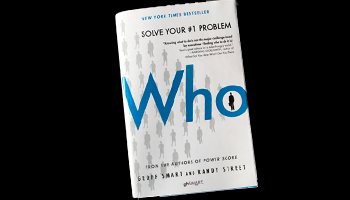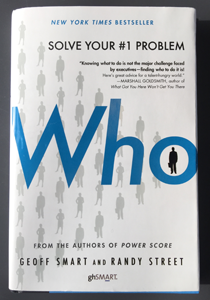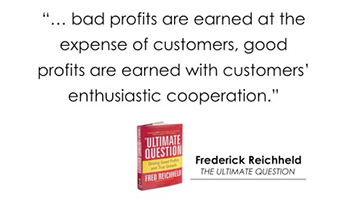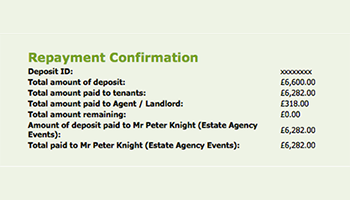Who – How to Solve your #1 Problem
Who – How to Solve your #1 Problem

 I’m very grateful to one of our Mastermind and Summit Group members,Reuben Barrett of Coalters in York, who introduced me to the book ‘Who’ by Geoff Smart and Randy Street. In simple terms they’ve nailed the biggest issue most businesses are facing now and will continue to face in the next few years if not decades – how to select and recruit the “A Graders”, how to win the competition for talent.
I’m very grateful to one of our Mastermind and Summit Group members,Reuben Barrett of Coalters in York, who introduced me to the book ‘Who’ by Geoff Smart and Randy Street. In simple terms they’ve nailed the biggest issue most businesses are facing now and will continue to face in the next few years if not decades – how to select and recruit the “A Graders”, how to win the competition for talent.
Smart and Street, (I’m so tempted to list them the other way round but they clearly prefer this order), suggest the following recruitment process:
1. Scorecard. Create a simple, 5 point scorecard based on required outcomes (NB these are specific and measurable). For example, take a Head of Sales position, the outcomes might include a. grow sales revenue from £x to £y, b. increase EBITDA margin from x% to y%, c. recruit and hire 3 key sales people, all A Graders, d. deliver monthly forecasts with x% accuracy, e. design and implement sales training that improves conversion from x% to y%. The idea is to have a scorecard for every single position in the company that clearly states the outcomes each position is required to deliver.
2. Source. Far and away the best way to source talent is via your own business and personal networks and those of your A Graders already on the team. External recruiters can also play a part but internal recruiters tend to deliver poorer results in the opinion of, and based on the research carried out by, Smart and Street. In 1545, William Turner wrote, “Byrdes of on kynde and color flok and flye allwayes together.” You already have access to A Graders but you might not realise just how powerful your network actually is.
3. Select. The book describes a four interview process. Let me add here my own fifth step, that isn’t in the book, to make sure all candidates complete an application form rather than send in a CV. A CV puts the candidate in control of the agenda, an application form ensures you’re directing the process.
The first interview is for screening and is carried out by telephone with just four questions: a. What are your career goals? b. What are you really good at professionally? c. What are you not good at or not interested in doing professionally? e. Who were your last five bosses, and how will they each rate your performance on a 1-10 scale when we talk to them? The book highlights why these questions are so powerful at identifying A Graders, for example by saying in e. above, “When we talk to them” rather than “if we talk to them” makes a profound difference in the conversation. When a candidate believes you will talk to their five previous bosses this causes them to be much more honest in their self-assessment.
The next step is the “Who” interview. Again, Smart and Street have created a process with five questions for each of the previous five positions, to be asked about the oldest job first working forward to the current/most recent: a. What were you hired to do? b. What accomplishments are you most proud of? c. What were some low points during that job? d. Who were the people you worked with? Specifically, i. What was your boss’s name? How do you spell that? What was it like working with him/her? What will he/she tell me were your biggest strengths and areas for improvement? ii. How would you rate the team you inherited on an A, B, C scale? What changes did you make? Did you hire anybody? Fire anybody? How would you rate the team when you left it on an A, B, C scale? e. Why did you leave that job?
The third step is the Focused interview. This involves other colleagues, each of whom will focus on one of the required outcomes from the scorecard. The final stage is the Reference interviews – ideally call and speak with as many of the previous bosses as possible, again using a set of questions that Smart and Street have designed.
4. Sell. Once you’ve identified an A Grader this is the moment to really sell to them the opportunity you have to offer. Too many people make the mistake of trying to do this early in the process fearing that a candidate has other options and will select these if the initial process is too one-sided. However, A Graders will appreciate the rigour and see the process positively, indeed if the bar isn’t set high enough they are likely to look elsewhere.
The biggest issue facing every business owner and senior director is recruitment and research shows that on average it’s 50:50 as to whether the right candidate is selected, in other words you might as well flip a coin as use the typical process adopted by most organisations. If you take the lessons from ‘Who’ and also those from ‘The Sales Acceleration Formula’ by Mark Roberge plus the brilliant workshop run for the Property Academy and LeadersINC Mastermind Groups by Jeff Grout you’ll improve that ration to 90:10 in your favour. And that will turn your biggest problem into your greatest asset.





